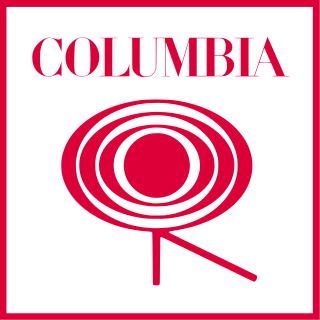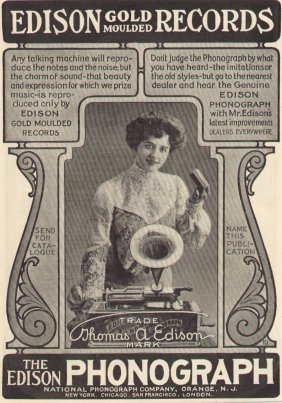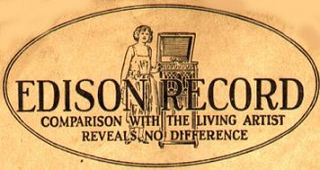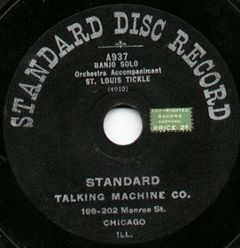
In music, a single is a type of release, typically a song recording of fewer tracks than an LP record or an album. One can be released for sale to the public in a variety of formats. In most cases, a single is a song that is released separately from an album, although it usually also appears on an album. In other cases a recording released as a single may not appear on an album.

Columbia Records is an American record label owned by Sony Music Entertainment, a subsidiary of Sony Corporation of America, the North American division of Japanese conglomerate Sony. It was founded on January 15, 1889, evolving from the American Graphophone Company, the successor to the Volta Graphophone Company. Columbia is the oldest surviving brand name in the recorded sound business, and the second major company to produce records. From 1961 to 1991, its recordings were released outside North America under the name CBS Records to avoid confusion with EMI's Columbia Graphophone Company. Columbia is one of Sony Music's four flagship record labels, alongside former longtime rival RCA Records, as well as Arista Records and Epic Records.

A phonograph record, a vinyl record, or simply a record is an analog sound storage medium in the form of a flat disc with an inscribed, modulated spiral groove. The groove usually starts near the periphery and ends near the center of the disc. For about half a century, the discs were commonly made from shellac, with earlier records having a fine abrasive filler mixed in. Starting in the 1940s polyvinyl chloride became common, the "vinyl records" of the late 20th century.

Brunswick Records is an American record label founded in 1916.

Okeh Records is an American record label founded by the Otto Heinemann Phonograph Corporation, a phonograph supplier established in 1916, which branched out into phonograph records in 1918. The name was spelled "OkeH" from the initials of Otto K. E. Heinemann but later changed to "OKeh". Since 1965, Okeh was a subsidiary of Epic Records, a subsidiary of Sony Music. Today, OKeh is a jazz imprint, distributed by Sony Masterworks.

Emerson Records was an American record company and label created by Victor Emerson in 1915.

The American Record Company was an American record label that was in business from 1904 to 1906.

Pathé Records was an international record company and label and producer of phonographs, based in France, and active from the 1890s through the 1930s.

Edison Records was one of the early record labels that pioneered sound recording and reproduction, and was an important player in the early recording industry.

The Edison Diamond Disc Record is a type of phonograph record marketed by Thomas A. Edison, Inc. on their Edison Record label from 1912 to 1929. They were named Diamond Discs because the matching Edison Disc Phonograph was fitted with a permanent conical diamond stylus for playing them. Diamond Discs were incompatible with lateral-groove disc record players, e.g. the Victor Victrola, the disposable steel needles of which would damage them while extracting hardly any sound. Uniquely, they are just under 1⁄4 in thick.

Optical disc packaging is the packaging that accompanies CDs, DVDs, and other formats of optical discs. Most packaging is rigid or semi-rigid and designed to protect the media from scratches and other types of exposure damage.

The overwhelming majority of records manufactured have been of certain sizes, playback speeds, and appearance. However, since the commercial adoption of the gramophone record, a wide variety of records have also been produced that do not fall into these categories, and they have served a variety of purposes.
A record changer or autochanger is a device that plays several phonograph records in sequence without user intervention. Record changers first appeared in the late 1920s, and were common until the 1980s.

Sound recording and reproduction is the electrical, mechanical, electronic, or digital inscription and re-creation of sound waves, such as spoken voice, singing, instrumental music, or sound effects. The two main classes of sound recording technology are analog recording and digital recording.

Highway Hi-Fi was a system of proprietary players and seven-inch phonograph records with standard LP center holes designed for use in automobiles. Designed and developed by Peter Goldmark, who also developed the LP microgroove, the discs utilized 135 grams of vinyl each, enough to press a standard 10-inch LP.

The LP is an analog sound storage medium, a phonograph record format characterized by: a speed of 33+1⁄3 rpm; a 12- or 10-inch diameter; use of the "microgroove" groove specification; and a vinyl composition disk. Introduced by Columbia in 1948, it was soon adopted as a new standard by the entire record industry. Apart from a few relatively minor refinements and the important later addition of stereophonic sound, it remained the standard format for record albums until its gradual replacement from the 1980s to the early 2000s, first by cassettes, then by compact discs, and finally by digital music distribution.
In the production of phonograph records – discs that were commonly made of shellac, and later, vinyl – sound was recorded directly onto a master disc at the recording studio. From about 1950 on it became usual to have the performance first recorded on audio tape, which could then be processed and/or edited, and then dubbed on to the master disc.

United Records operated in the years before World War I. The label was owned by the United Talking Machine Company of Chicago, Illinois, which produced the double-sided lateral cut disc records with an unusually large spindle hole, and wind-up phonographs with large spindles for playing the records.
The Seeburg 1000 Background Music System is a phonograph designed and built by the Seeburg Corporation to play background music from special 162⁄3 RPM vinyl records in offices, restaurants, retail businesses, factories and similar locations. Seeburg provided a service similar to that of Muzak.

Aretino was a United States record label, in business from about 1907 to 1914.
















